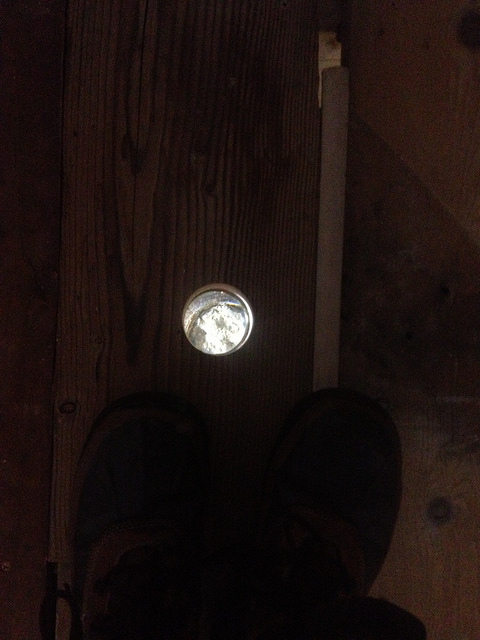
Installation Review
[flickr id=”13153236685″ thumbnail=”medium_640″ overlay=”true” size=”medium_640″ group=”” align=”none”]
As someone who is interested in developing a sustainable art practice here in Chicago, I need to get more in the habit of writing reviews about other peoples’ work. It’s hard to find time in grad school to get out, let alone write reviews on the work I see, but this week I went to go see Augur by Marissa Lee Benedict at the Chicago Artist Coalition (a wonderful organization dedicated to supporting local Chicago artists).
Augur is an installation running until March 27th, which featuring a four channel video piece of a performance Marissa shot in Hinkley, California of her attempts to collect core samples from the parched earth of the Harper Dry Lake (where Pacific Gas and Electric were sued due to allegedly contaminating groundwater with chromium -6 which resulted in a number of cancer cases).
This work is a continued exploration of Benedict’s interest in the idea of the “public amateur” as well as a further expression of her interest in systems that allow for “Equal space for planned human action and uncontrollable biological, chemical, and physical reaction.”
EXPERIENCING THE WORK
As I entered the space of the installation I found myself in a narrow hallway about nine feet long. The walls and the ceiling were painted black and a wooden floor was constructed above the gallery floor specifically for this piece. Once in the hallway, I no longer felt like I was in the Chicago Artist Coalition’s Gallery space. I was somewhere else. Beneath the wooden floor I heard an FM radio giving climate information. At the end of the hallway was a small hole about two inches in diameter cut into the wood floor and in the place of the cut out wood was a glass lens magnifying what looked like a core sample. This was a wonderful way of communicating the connection Benedict sees between a function of a camera’s aperture and the process of taking core samples as, mentioned in the project statement:
Just as the aperture of a camera opens to allow light to pass though, Benedict’s repeated attempts to extract and expose the strata below speaks to the artist’s process of searching and re-searching, striving to make tangible connections with the elusive or imperceptible.
[flickr id=”13153344993″ thumbnail=”medium_640″ overlay=”true” size=”medium_640″ group=”” align=”none”]
The installation actually had an interesting relationship to another work by Sarah and Joseph Belkamp called “It’s Getting Hot in Here,” which filled the same Bolt Gallery space two years earlier. In that earlier piece the Belkamp’s asked for permission to drill a hole in the ground to suggest that a core sample had been taken. Having shown with the Belkamps before at the MCA, it would make sense that Melissa was intentionally referencing their work and the connections it has with hers.
At the end of the hallway was the entrance to a square room with four projectors that I imagine were intended to cover the four walls displaying video of her performance. Unfortunately, the projectors were not functioning at the moment, and I was therefore not able to experience all of the immersive qualities of the piece. I did however see the footage later and it was beautiful.
[vimeo]https://vimeo.com/85321134[/vimeo]
Peeking into the small hole in the floor reminded me of Marcel Duchamp’s Etant Donnés in which a view looks through a crack in a wooden door to see a beautiful diorama. In spite of the technical difficulties, I think the parts I was able to experience were successful and I was indeed immersed in an environment that transported me out of the Chicago Artist Coalition gallery space. Marissa Lee Benedict is an artist I look forward to seeing more from.
